The Red Diamond Is The Rarest Of All


There are few things on Earth so rare that scientists lack the ability to study them properly. Take ball lightning as an example. Ball lightning is a very rare phenomenon described as spherical, exploding balls of electricity—like something from science fiction. It’s so rare that it doesn’t exist enough for scientists to study and fully understand. The same can be said for red diamonds.
Natural diamonds, as a whole, are among the rarest substances on earth. When we break out the category of natural color diamonds, we find that they are even rarer. In fact, according to the GIA, only 0.4% of all natural diamonds graded in the last twenty years have been fancy colors. Among all those fancy color diamonds, red is the rarest color. They are so rare that less than thirty true red natural diamonds are known to exist.
“Among all those fancy color diamonds, red is the rarest color.”
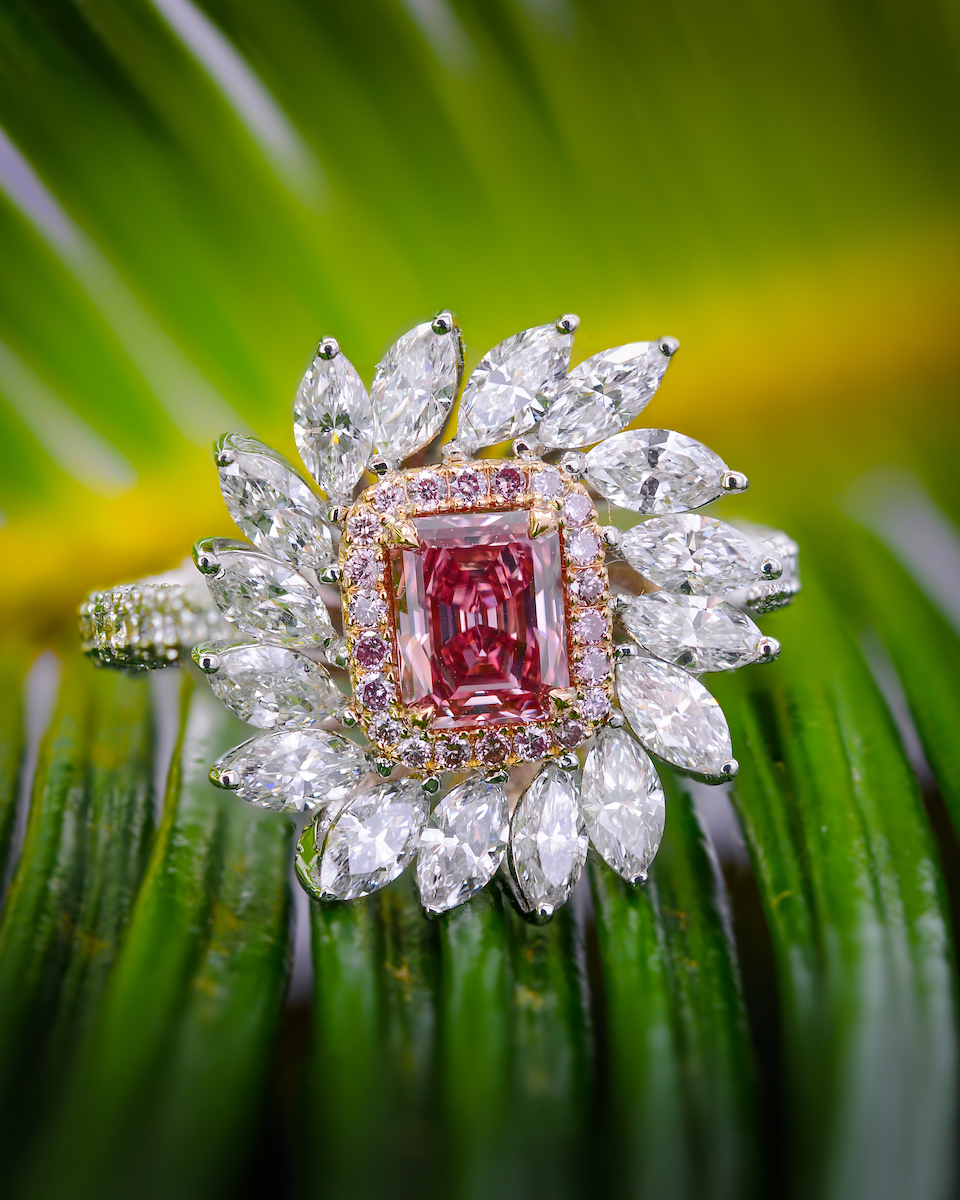
A diamond is a crystalline form of pure carbon formed under extreme conditions within the Earth up to three billion years ago. Elements other than carbon or natural radiation introduced during formation can alter a natural diamond from a colorless crystal to one that exhibits almost any color of the rainbow. For instance, natural radiation within the earth can cause green diamonds; boron can cause blue diamonds. On the other hand, red diamonds are not thought to be caused by foreign elements like other diamond colors.
Instead, scientists believe red diamonds are caused by an extreme version of crystal lattice distortion—the same thing that makes pink diamonds pink. This distortion is created naturally, deep in the earth, by extreme heat and pressure in every direction after the stone was formed. The extra heat and pressure can change the position of the carbon atoms inside the diamond, causing them to reflect pink or—in extreme cases—red light. Although most believe this is what causes these diamonds to have their color, the phenomenon is so rare that scientists cannot study it enough completely.
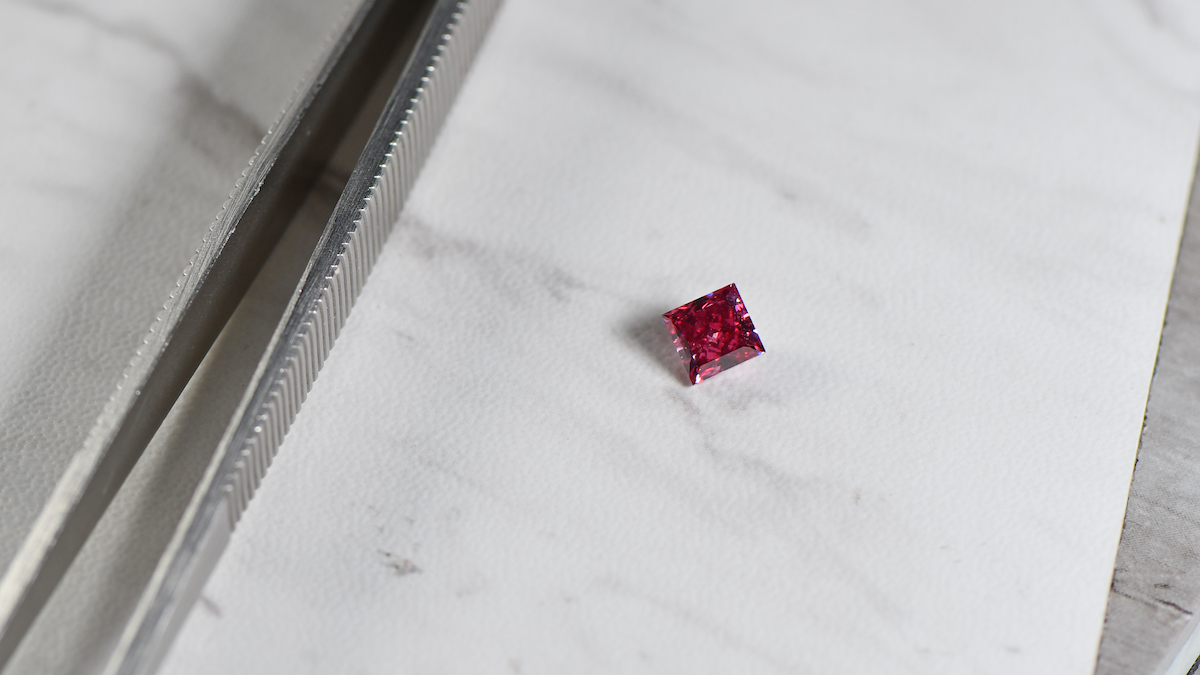
The Moussaieff Red
As these diamonds are so rare, they have never been found in large sizes. Even though finding colorless diamonds is also rare, we occasionally find sizes 100 carats or more. With red diamonds, however, the largest one in existence is only 5.11 carats, named The Moussaieff Red. Discovered in the 1990s in the Minas Gerais region of Brazil, a source of natural color diamonds for hundreds of years, The Moussaieff Red was 13.90 carats in its rough form.
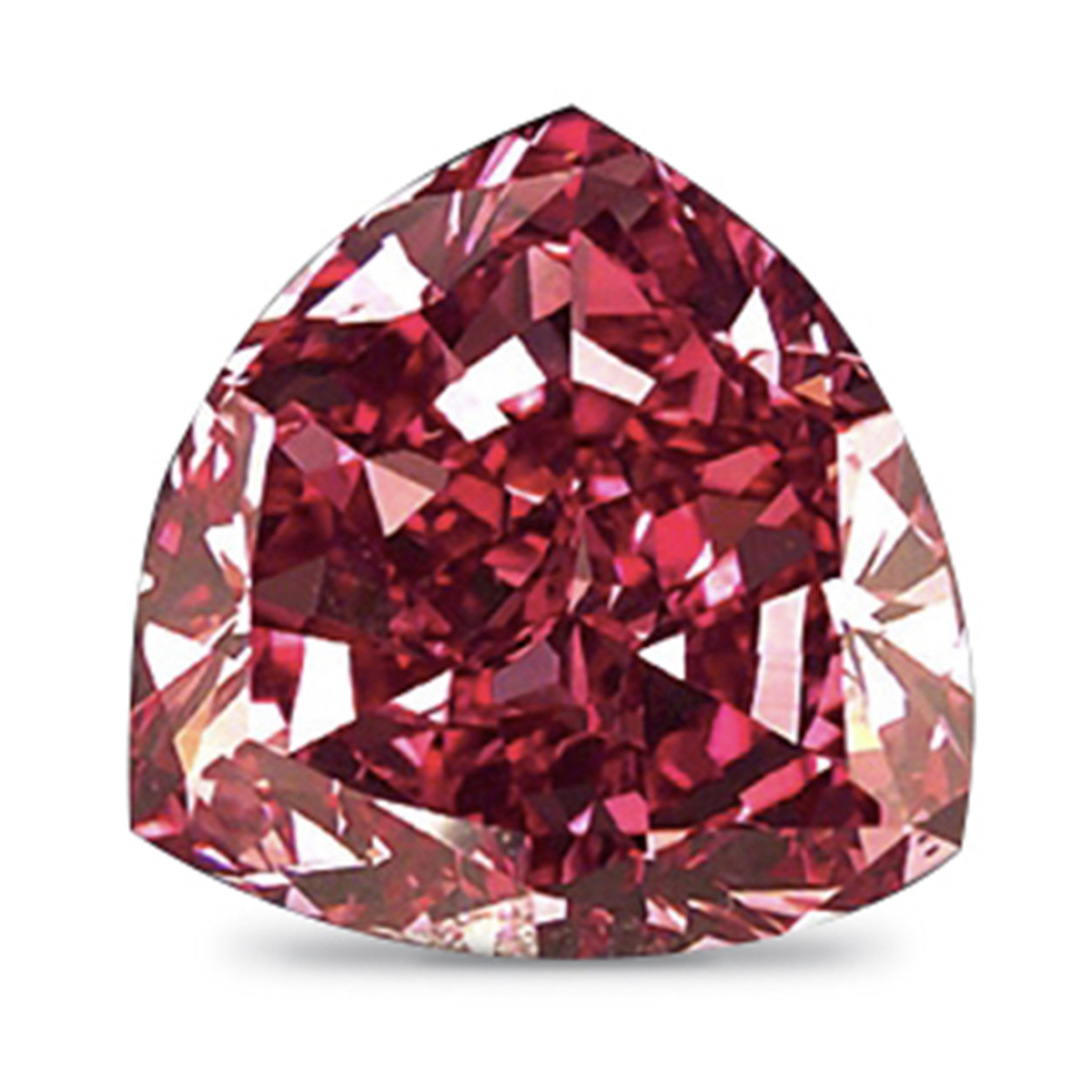
Following negotiations with the man who discovered the diamond, it was eventually purchased by legendary diamond cutter William Goldberg. After much study, analysis and planning, Goldberg eventually cut the rough diamond into the 5.11 carat triangular brilliant cut we know today, and it officially became the largest fancy red diamond in history. In 2001, Goldberg sold the diamond to the famous London jeweler Shlomo Moussaieff, from whom it gets its name. The reported sale at the time was $8 million, a bargain considering the priceless nature of the stone today. The Moussaieff Red remains in the hands of Moussaieff Jewelers and has since had multiple stints at museum exhibits, including the famous “Splendour of Diamonds” exhibition at the Smithsonian in 2003 (considered one of the most significant diamond exhibitions of all time).
The Rarity of Red Diamonds
Like most other fancy color diamonds, these diamonds can be found in one pure color, fancy red, or with secondary hues, which include purplish, brownish and orangey; for example, in a ‘fancy orangey red’ diamond, red is the dominant color, but orange is the secondary color. Unlike most other color diamond color possibilities, red cannot be a secondary color. Most natural color diamonds also come in several intensity levels, such as intense, vivid or light. An example of this could be ‘fancy vivid pink’ or ‘fancy light yellow.’ These diamonds, however, only come in one intensity level, fancy red. For these reasons, ‘fancy red’ alone is the rarest and, therefore, the most valuable.

Since so few exist, red diamonds—even those with modifying colors—do not come to market very often. However, when they do, they command prices of easily more than $1 million per carat, far more than almost any other type of diamond. In 2022, Heritage auctions sold a 1.21 carat fancy orangy red diamond for over $1.2 million per carat, a massive sum for a diamond of that size, especially considering it has a modifying color. Because of their great value and the history of their value continuously rising, red diamonds are most often purchased by investors.
While most of us may never be fortunate enough to own one of these stones, one of the largest and most beautiful red diamonds ever discovered is available for nearly anyone’s gaze. The 5.03 carat round brilliant cut De Young Red is the third-largest diamond of its kind in existence and sits in the permanent collection of the Smithsonian Museum in Washington, D.C. A visit to their famous gem exhibit to see the De Young Red and the rest of their incredible diamond collection deserves a spot at the top of your D.C. itinerary.
The Rising Sun and The Setting Sun
Fourteen years ago, a rare diamond collector, Mr. Kushal Sacheti, came across a diamond so rare that even seasoned collectors like himself would likely never see something like it in person. But there are more incredible parts of the story. He already owned a diamond that was a near-perfect match. It was a seemingly impossible find. Now, known as The Rising Sun and The Setting Sun, this pair of matching diamonds manifest the most elusive diamond hues: red and orange. These round brilliant cut gems, weighing 1.49 and 1.52 carats, respectively, are miracles of nature and probability.
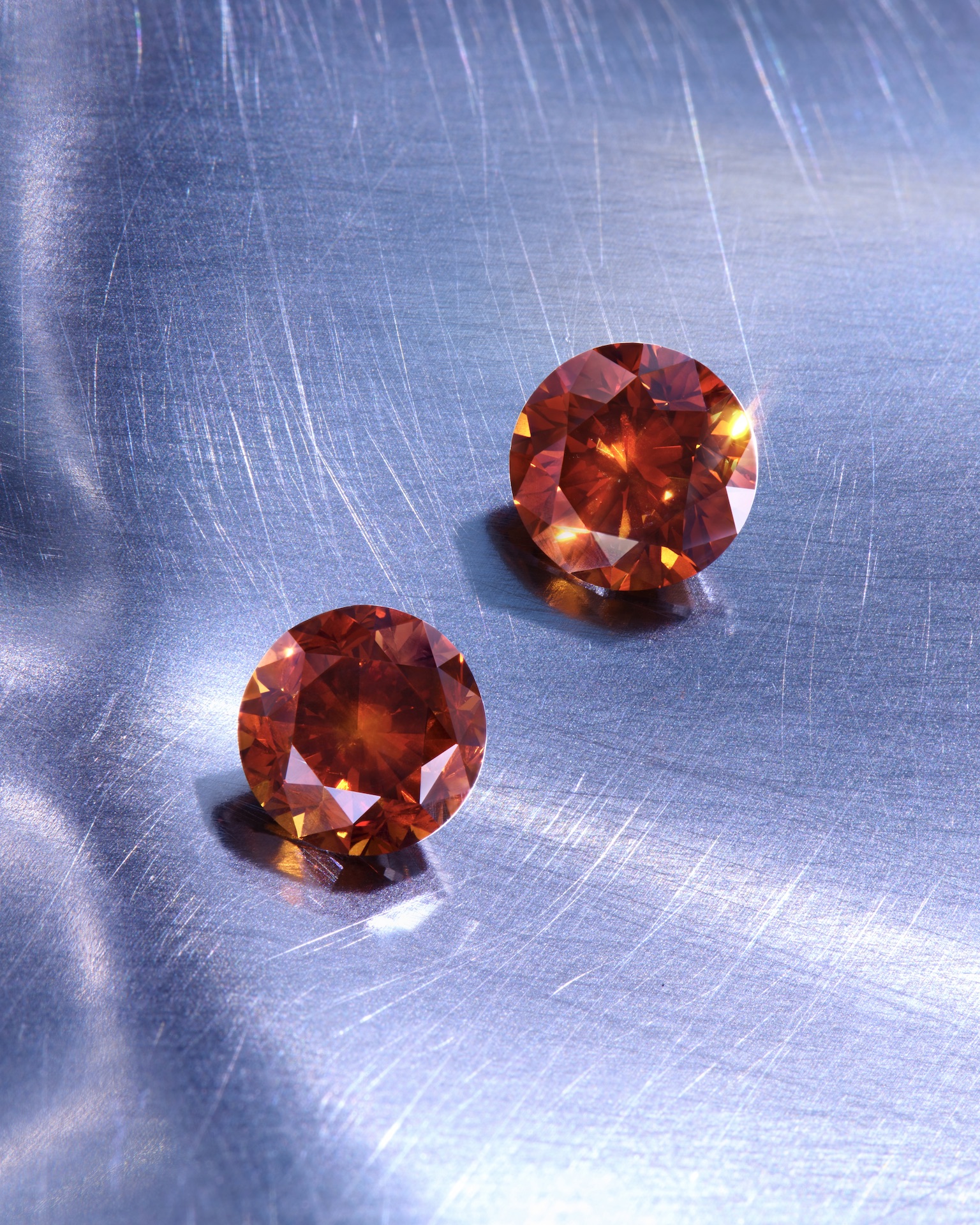
The Gemological Institute of America’s (GIA) designation of their colors— ‘fancy reddish orange’ for The Rising Sun and ‘fancy brownish orangy-red’ for The Setting Sun—barely does justice to their visual harmony. To the unaided eye, they are a near-perfect match, their fiery glow reminiscent of the celestial dance at dawn and dusk.
Gemologist Tom Gelb explains, “To have a matched pair like this beggars belief and seems almost impossibly lucky.” The Rising Sun and The Setting Sun are believed to be the largest matched pair of diamonds with red color to exist. Their serendipitous pairing is nothing short of destiny.
According to Gelb, the genesis of their mesmerizing hue is up for debate. He says, “So few orangey reds have ever been discovered that I wouldn’t even hazard a guess.” Many experts agree that the red color is due to enough heat and pressure within the Earth to introduce structural anomalies at a molecular level. These conditions often destroy potential red diamonds, making their survival a phenomenon. Conversely, according to Gelb, orange color can have two causes. “One is due to nitrogen atoms replacing carbon atoms, and the other is still unknown. There are simply not enough of these diamonds available to study.”
This pair shows nature’s capacity to create the sublime out of the extreme and how even the most unlikely pairs can unite to form a legacy of unparalleled splendor.
The Argyle Phoenix Red Diamond
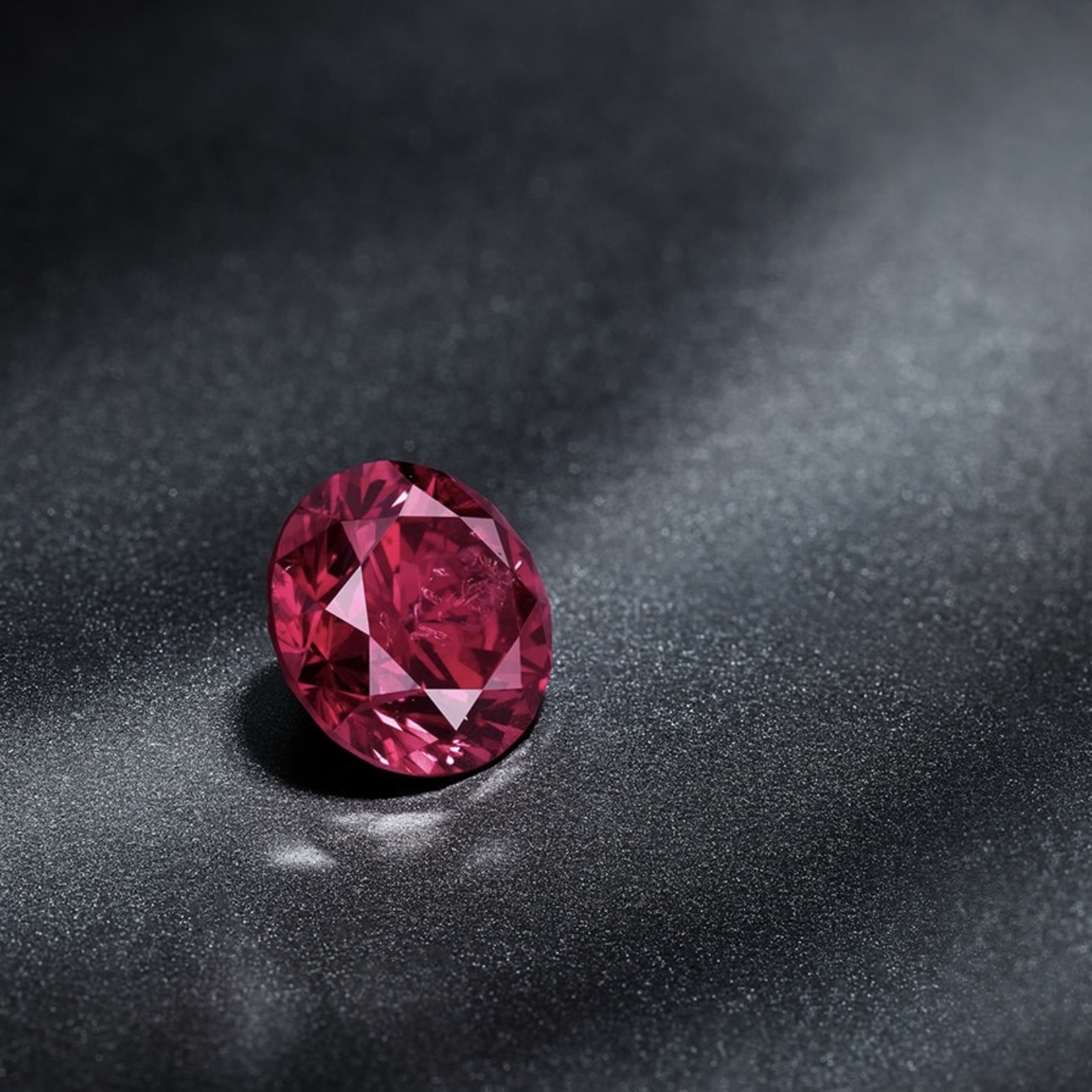
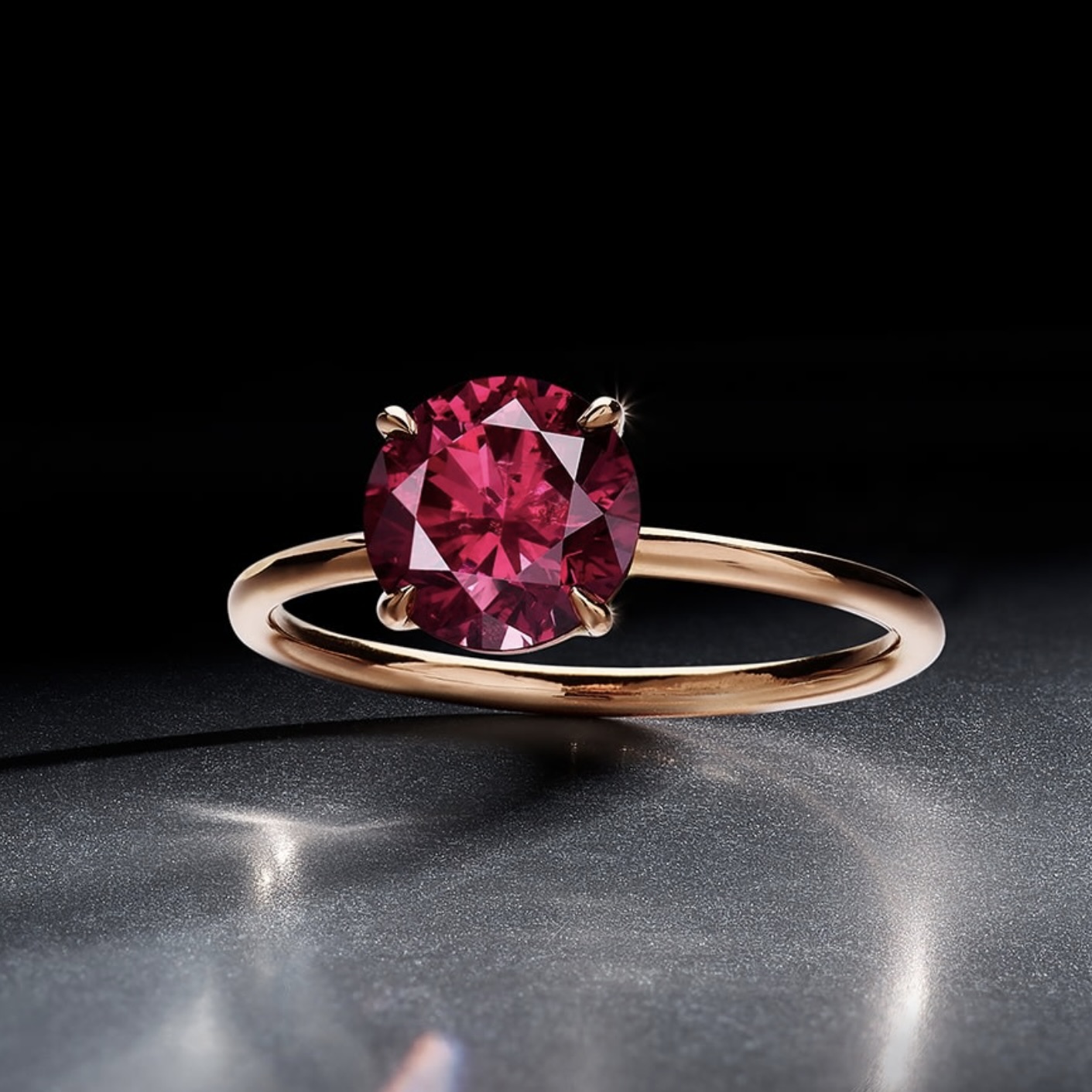
The rare 1.56 red “Argyle Phoenix” sold for $4.2 million at the Geneva auction in May 2024.
The Argyle Phoenix, the largest known round brilliant cut natural fancy red diamond, set new benchmarks for both total price and price per carat (approximately $2.68 million). Sourced from the famed Argyle mine in Australia, this rare gem was purchased by Laurence Graff, the founder of the legendary Graff Diamonds, further cementing its status in the annals of auction history.
The significance of these recent events cannot be overstated. The record-breaking sale at Phillips underscores the growing demand and appreciation for natural-colored diamonds, particularly those with unique hues and exceptional quality.
